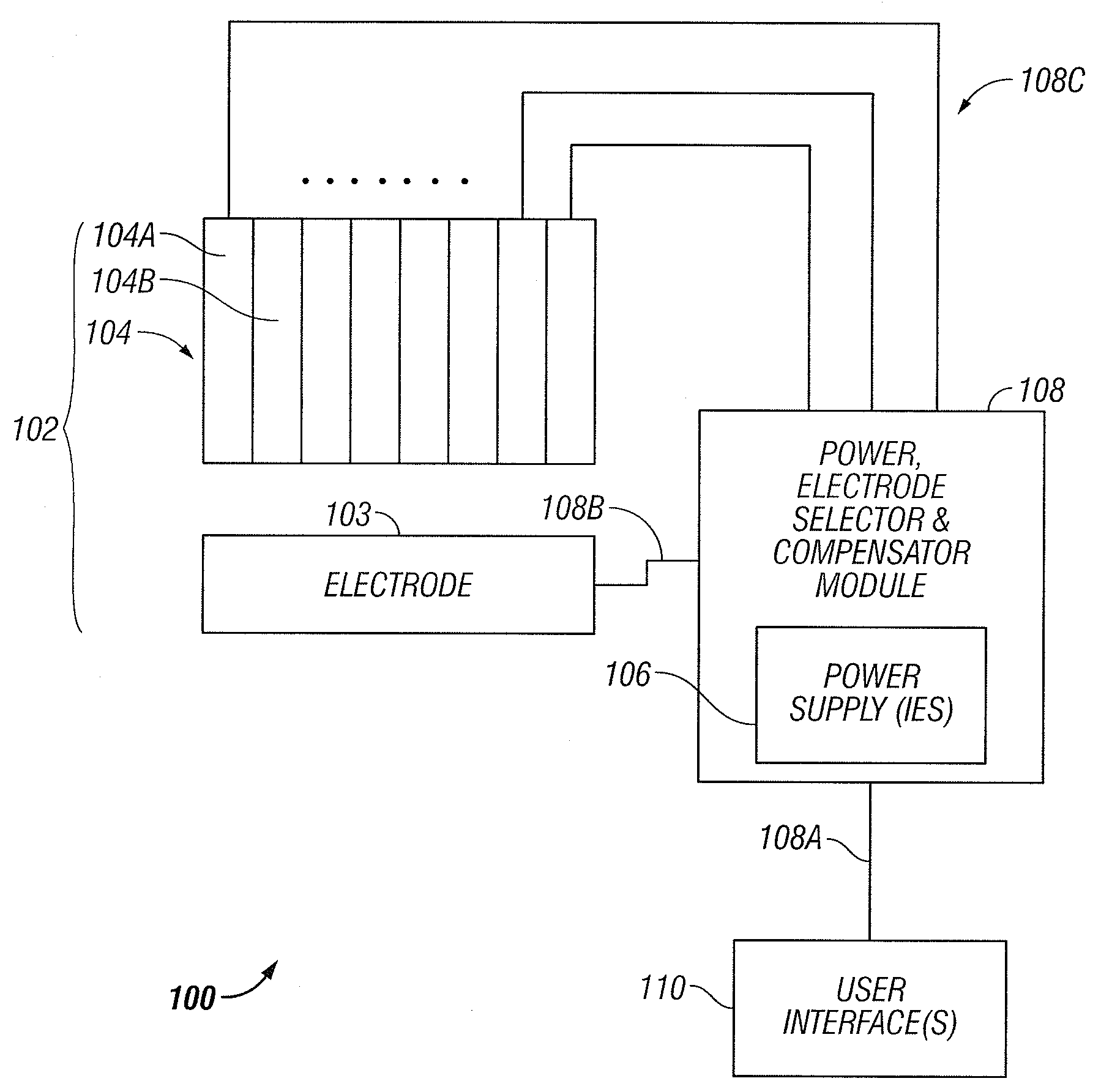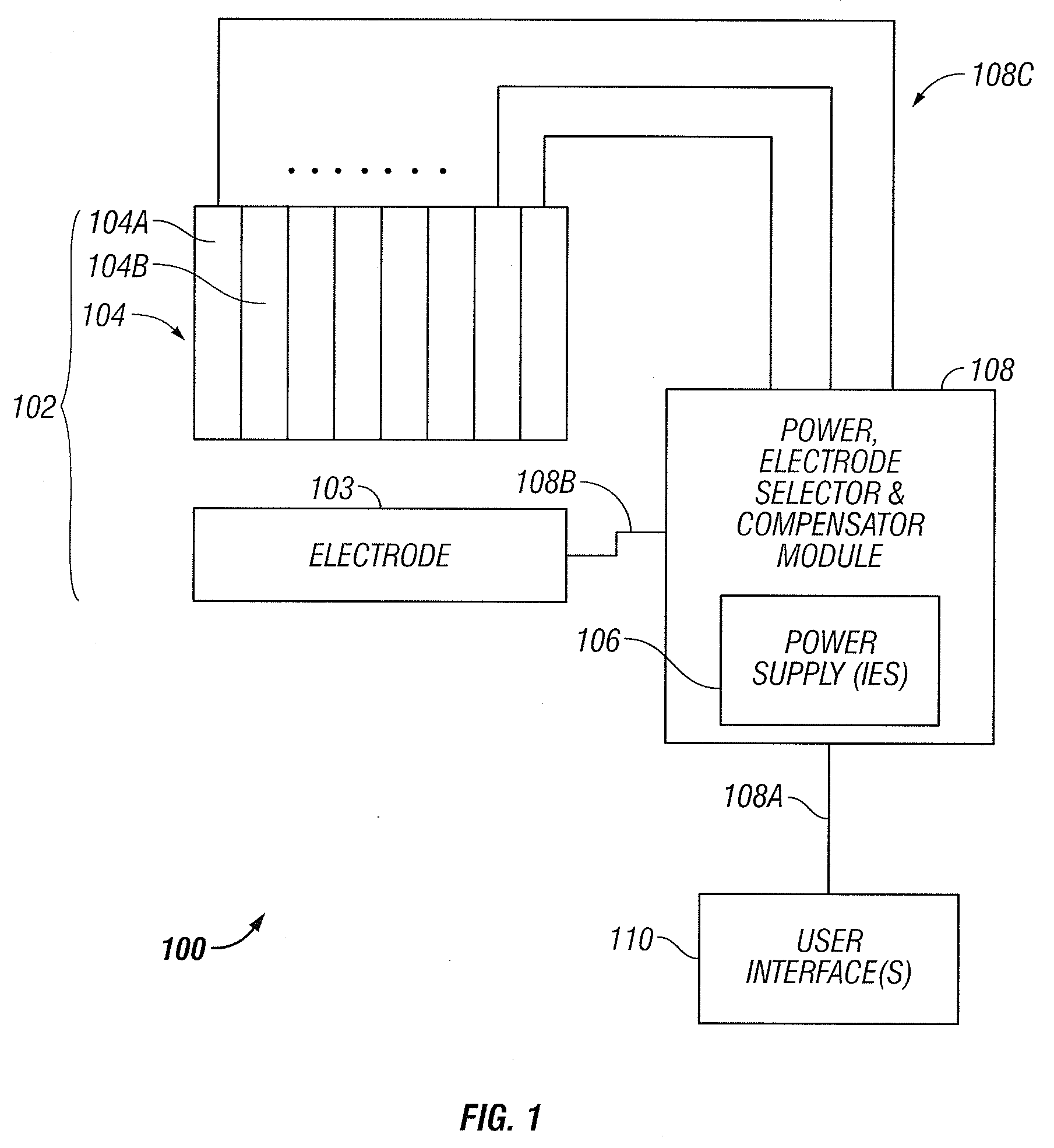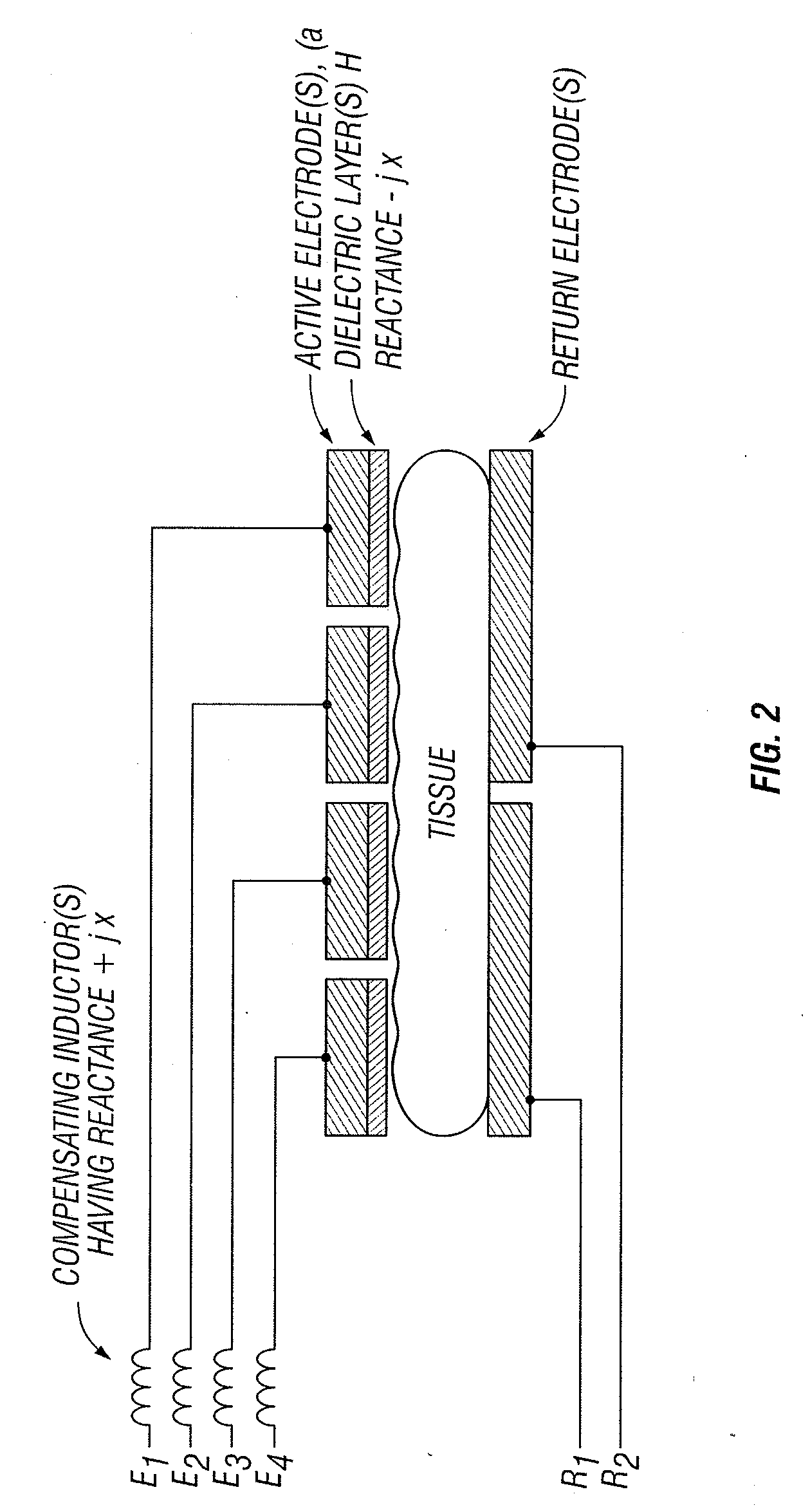Electrocautery method and apparatus
a technology of electrodes and electrodes, applied in the field of tissue cauterization, can solve the problems of small size of electrode structures, difficult to remove intact most organs, and time-consuming and laborious sealing of blood vessels
- Summary
- Abstract
- Description
- Claims
- Application Information
AI Technical Summary
Benefits of technology
Problems solved by technology
Method used
Image
Examples
Embodiment Construction
[0018]In view of the problems of conventional technology that the inventors have recognized (as discussed above), the inventors have sought to improve the ability of a user to control electrocautery electrodes after said electrode have been inserted into the body. Further areas of their focus include improving the efficiency of transferring power to electrode structures, and improving the accuracy of measurements taken from the electrode structure in situ. One benefit of implementing these improvements is the ability to use larger electrode surfaces, with the advantageous consequences discussed above.
[0019]FIG. 1 illustrates one embodiment of electrocautery system 100. The system 100 includes an electrode structure 102 that is electrically driven by a power, electrode selector, and compensator module 108. The module 108 is operated in accordance with user input conveyed via one or more user interfaces 110.
[0020]As explained below in greater detail, certain components of the system 1...
PUM
 Login to View More
Login to View More Abstract
Description
Claims
Application Information
 Login to View More
Login to View More - R&D
- Intellectual Property
- Life Sciences
- Materials
- Tech Scout
- Unparalleled Data Quality
- Higher Quality Content
- 60% Fewer Hallucinations
Browse by: Latest US Patents, China's latest patents, Technical Efficacy Thesaurus, Application Domain, Technology Topic, Popular Technical Reports.
© 2025 PatSnap. All rights reserved.Legal|Privacy policy|Modern Slavery Act Transparency Statement|Sitemap|About US| Contact US: help@patsnap.com



